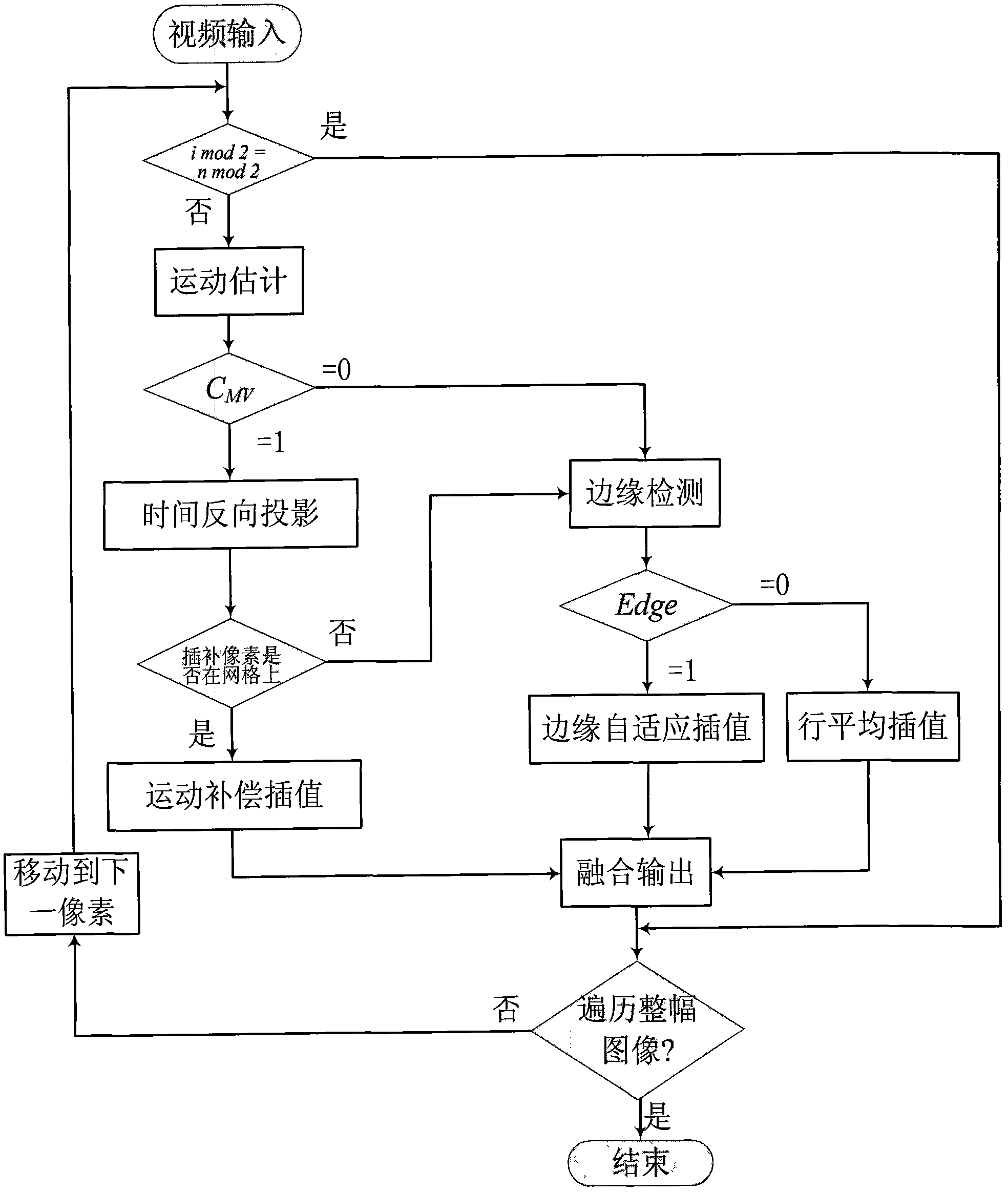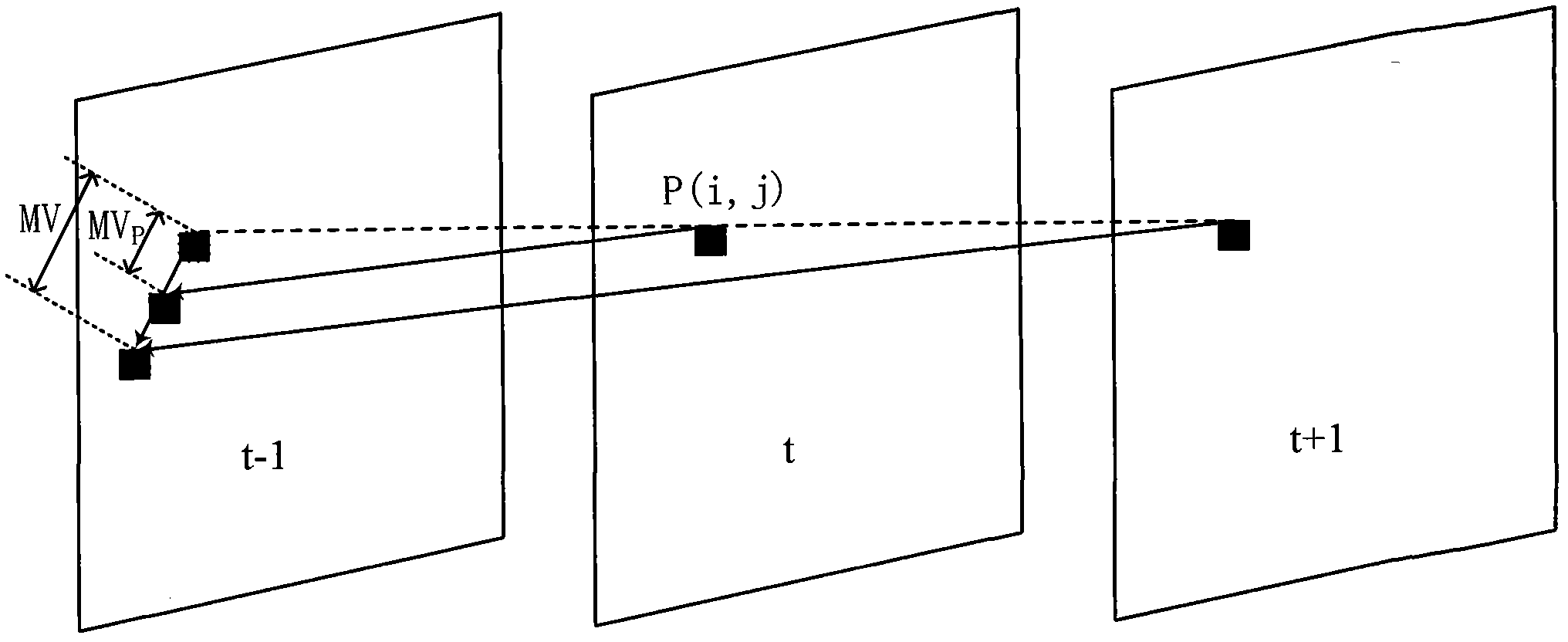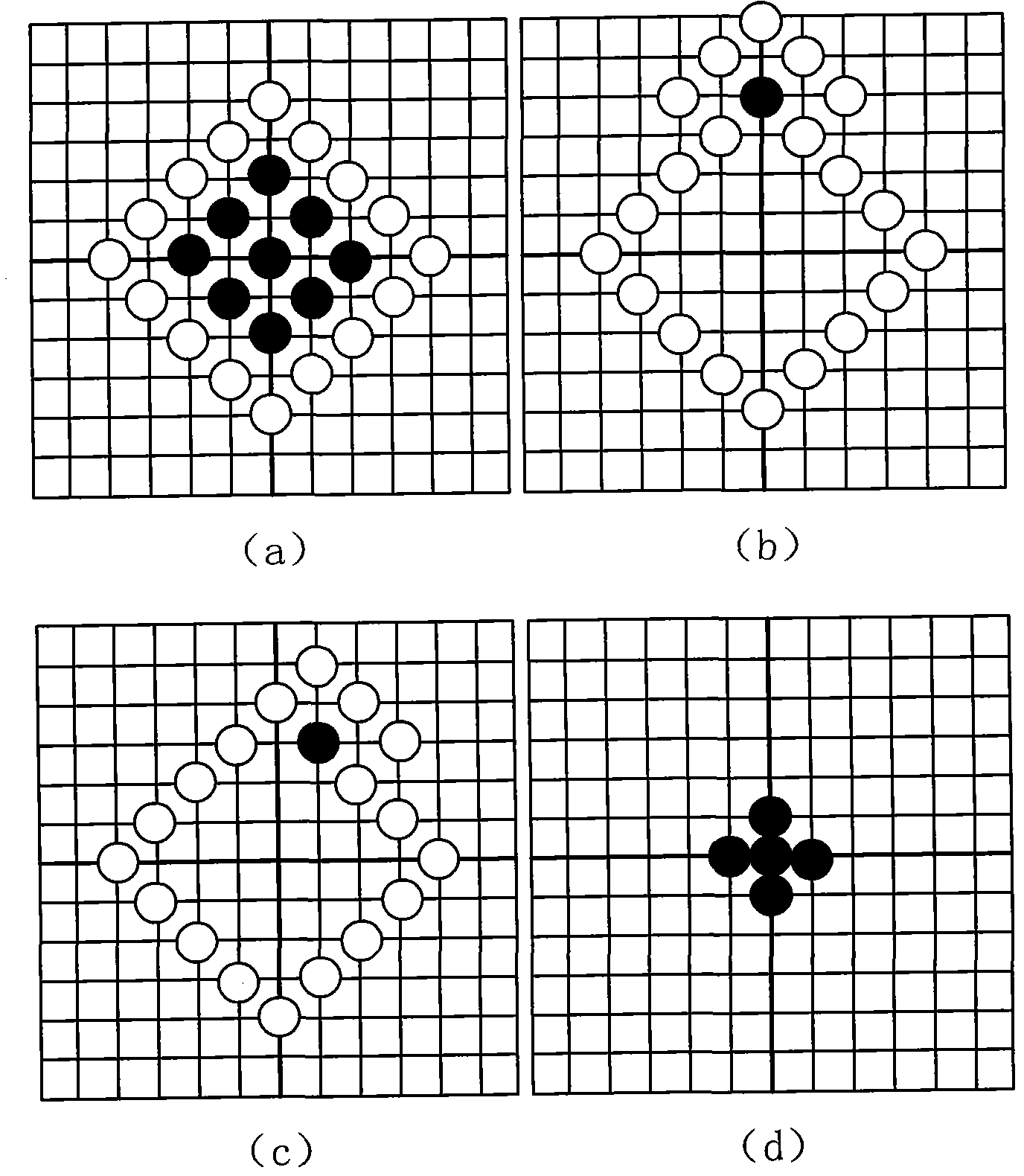Motion compensation de-interlacing method based on adaptive interpolation
A motion compensation and self-adaptive technology, applied to color TV parts, TV system parts, standard conversion, etc., can solve the problems of jagged vertical edges, easy blurring of images, and inability to increase vertical resolution of images, etc.
- Summary
- Abstract
- Description
- Claims
- Application Information
AI Technical Summary
Problems solved by technology
Method used
Image
Examples
Embodiment Construction
[0047] Such as figure 1 As shown, the following examples illustrate the present invention based on adaptive interpolation motion compensation de-interlacing method, the steps are as follows:
[0048] (1) For a pixel point P(i, j) to be processed in one of the fields in the input video image (take the t-th field as an example), determine whether the pixel point to be processed needs interpolation processing, if i is 2 If the remainder is equal to t and takes the remainder of 2, interpolation processing is not required, and the gray value of P(i, j) remains unchanged and enters step (9); otherwise, step (2) is performed;
[0049] (2) Taking the t-1th field image as a reference image, perform motion estimation on the backward macroblock whose coordinates are the pixels corresponding to the pixel point P(i, j) to be processed in the t+1th field image, and obtain The first motion vector (MV x , MV y );
[0050] (3) The first motion vector (MV x , MV y ) and the preset motion ...
PUM
 Login to View More
Login to View More Abstract
Description
Claims
Application Information
 Login to View More
Login to View More - R&D
- Intellectual Property
- Life Sciences
- Materials
- Tech Scout
- Unparalleled Data Quality
- Higher Quality Content
- 60% Fewer Hallucinations
Browse by: Latest US Patents, China's latest patents, Technical Efficacy Thesaurus, Application Domain, Technology Topic, Popular Technical Reports.
© 2025 PatSnap. All rights reserved.Legal|Privacy policy|Modern Slavery Act Transparency Statement|Sitemap|About US| Contact US: help@patsnap.com



